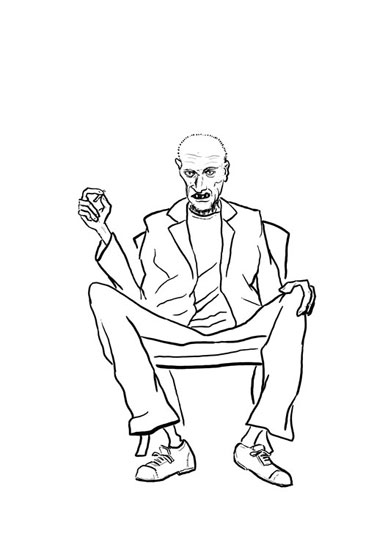At first I thought, well, ok, but doing extreme stuff is pretty ‘run of the mill’ here in Aotearoa. Don't we do nutty stuff all the time. Jumping off bridges attached to rubber, rolling down hills in plastic bubbles. You know - ‘extreme adventure’. But still "Going to Extremes" does go beyond the your average - and a good job too. The intro is a great start. Grzelewski is on the run from the military, a deserter of sorts in his native Poland. A Bond like start to a lifetime of adventuring. I wonder, though are these sorts of a adventures just a need to move beyond just a way to get a thrill for yourself. Adventures can be gained from what you do in the world sure, but it seems to me, the best adventures are the ones where you do something for someone else. The book traverses many slopes from sharks to avalanches, to underwater ice caves and oddly lichen. The best quotes lurk in this chapter: "Lichenologists are a peculiar lot ... dreamy eyed and detached, they seem to inhabit a different dimension. They speak a language only they understand and haunt places the rest of us usually avoid." True to much of the destinations here in, it seems. endangered species, providing support for people recovering from massive injuries or the masses of heroes in our country that no one has ever heard about. People who undertake these endeavors are the true adventures. This book will help open your eyes to what true adventure can be. New Zealand is a land of adventure and most of it happens completely unacknowledged by practically everyone in the country.
There are some great moments.Don Merton's rescue of the kakapo, the world's most endearing parrot! Diving inside the wreck of the ilfated Mikail Lementov (the history to the point it sunk is fascinating alone). There are tales of saving Kiwis, diving for treasure in the wrecks and tales from volunteer firefighters It's a heady mix.
After you have read this book, maybe it will inspire your own truly unique adventure. Or maybe you already are one of the unknown adventurers and you just didn't realize it.
Writer, photographer and adventurer Derek Grzelewski was born in Poland and emigrated to New Zealand while in his early 20s. He is a regular contributor to top-end magazines like New Zealand Geographic, Australian Geographic, Smithsonian, GEO and Flylife. He is a former professional fly fishing guide and the founder of Wanaka Flyfishing Academy.
Rob Sloane, editor of FlyLife magazine wrote about his TROUT DIARIES: "The book will surely become a classic. I couldn't put it down. If I ever read a better fishing book I can't remember it."
Derek lives in Wanaka, New Zealand, on the banks of the Clutha river. His websites are www.TroutDiaries.net and www.DerekGrzelewski.com.














